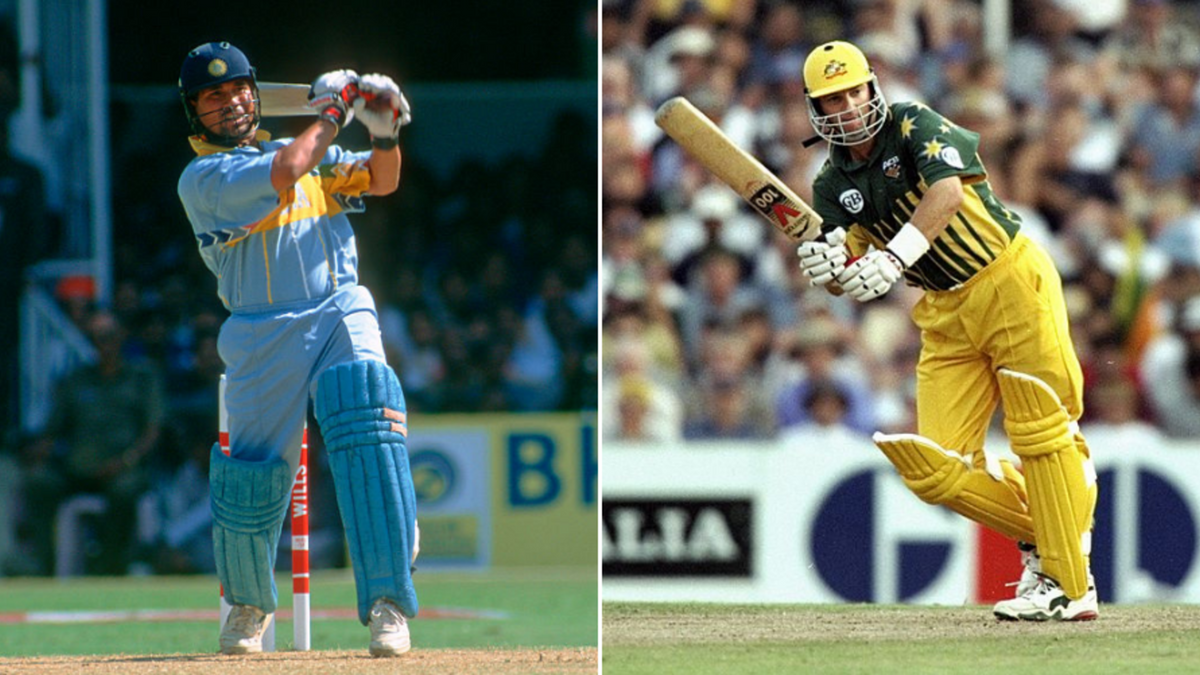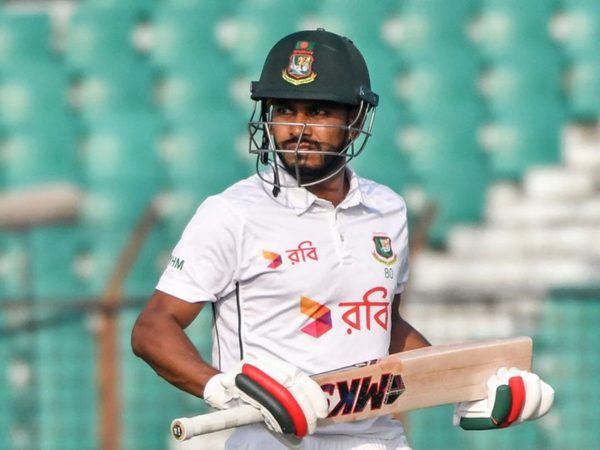
A list of ODI batting greats who started their careers in the middle order, but became hugely successful once they were promoted to the top of the order.
While certain openers such as David Warner and Hashim Amla were drafted into teams to fulfil batting roles at the top of the order, some of the other all-time opening greats started in the middle order, and enjoyed varying degrees of success with the bat, before a move to the opener’s slot unlocked their true potential.
The statistics mentioned below are their numbers as opening batsmen.
Sachin Tendulkar
15,310 runs @ 48.29, 100s: 45, HS: 200*
For a batsman who ended with over 15,000 runs as an opener, it’s a surprise that Tendulkar spent the first four and a half years of his career shuttling between batting positions 4 and 7; it was the first half of the 1990s when India still had opening options in Ravi Shastri, Navjot Singh Sidhu and Krishnamachari Srikkanth. A young Tendulkar didn’t hit a single century in his first 65 ODI innings, but it all changed when he was promoted to face the new ball and hit a whirlwind 49-ball 82 against New Zealand in 1994. He ended with 45 ODI centuries in that position.
Sanath Jayasuriya
12,740 runs @34.61, 100s: 28, HS: 189
Much like Tendulkar, Jayasuriya’s explosive batting was stifled for the first four years of his ODI career. At the time, Jayasuriya was considered more of a bowler; in fact, in his first 45 ODIs, he exclusively batted in the middle order, and his batting average stood at 14.08. He was briefly promoted to the top before being pushed down again, but three back-to-back fifties against Pakistan in 1994 as opener sealed the position for him. By the time he was done in 2011, Jayasuriya had scored 12,000 runs and hit 28 hundreds at the top of the order.
Rohit Sharma
7,148 runs @58.11, 100s: 27, HS: 264
There wouldn’t be many ODI careers that have had two halves as contrasting as Rohit’s. For the first six years, he was the “talent” waiting to announce himself in one-day cricket, but there were only brief sparks of brilliance as he tried to find breathing space in a packed middle order. The opportunity came in early 2013 when he was pushed up and hit 83 against England in Mohali. With Gautam Gambhir’s career fading away around the same time, the new combination of Rohit and Shikhar Dhawan turned out to be a masterstroke, as was evident in the Champions Trophy triumph that followed.
Rohit has since returned three double centuries, the only batsman to do so in ODIs, and averages 58.11 as opener.
Chris Gayle
10,179 runs @39.45, 100s: 25, HS: 215
One of only three batsmen to total over 10,000 ODI runs as opener, Gayle batted everywhere between 2 and 7 in the first 18 innings of his one-day career, managing just 36 runs in his first six outings. He was then tried at the top of the order, and settled nicely in the role after a couple of sedate starts. Over the next two years, he made the spot his own, averaging 49.86 in 2002 (including three centuries in four ODIs against India) and 51.63 in 2003, and has since gone on to become one of the greatest white-ball openers of the game.
Tillakaratne Dilshan
7,367 runs @46.04, 100s: 21, HS: 161*
For most batsmen on this list, the switch to opening came in the first half of their careers. For Dilshan, a permanent spot at the top came only in 2009, ten years after his debut. It turned out to be a masterstroke and gave his career an incredible second wind.
An all-rounder who essayed the role of a floater for the first decade, Dilshan hit just one century until 2009. Bumped up to open that year, Dilshan was an instant hit, scoring four centuries in 2009 alone. That season, he was also the top run-getter in the T20 World Cup.
Over the next seven years, Dilshan hit 21 centuries and 34 fifties and ended with an average of 46.04 as opener.
Virender Sehwag
7,518 runs @36.49, 100s: 14, HS: 219
Initially inducted into the Indian team as a bowling all-rounder, Sehwag used to bat as low as No.7 and 8, hardly getting enough time or deliveries to create an impact. In his 12th ODI, Sehwag was asked to open alongside skipper Sourav Ganguly, after having batted at No.5, 6 and 8 in the previous three games. Four matches into the new role, he hit a 70-ball 100 against New Zealand, but when Sachin Tendulkar returned to take the role, Sehwag found himself in the middle order once again. It was only in early 2002 that he found a permanent spot at the top, possibly after he was handed a similar promotion in Test cricket just months ago.
Mark Waugh
5,729 runs @44.06, 100s: 15, HS: 173
With Mark Taylor and Michael Slater already at the top, Australia had little reason to change their opening combination in the first half of the 1990s. Mark Waugh started off as low as five, but slowly crept up the order as his career progressed. It all changed in January 1996, when Waugh replaced Slater to partner Taylor in the Benson & Hedges World Series – out came 130 runs off his bat in an opening partnership of 189 against Sri Lanka. He hit three more centuries in his next nine ODIs and sealed a permanent place at the top until his last ODI in 2002.
Only Adam Gilchrist (9,200) and Matthew Hayden (5,892) have scored more runs as an opener for Australia.
Saeed Anwar
8,156 runs @39.98, 100s: 20, HS: 194
Arguably Pakistan’s greatest one-day opener, Anwar’s promotion to the top was swifter than most of the others on the list. He began at 3 and dropped down to 5, but a move to the top in the Benson & Hedges World Series in 1990, in his 10th ODI, seemed to have given his batting another dimension. In only his third innings as opener, Anwar clubbed 126 off 99 balls, partnering with Ramiz Raja for a 202-run stand against Sri Lanka in that tournament, and, barring a few exceptions, remained Pakistan’s opener until his retirement in 2003.
Anwar scored close to 4,000 runs more than Pakistan’s next most prolific opener, Aamer Sohail.
Sourav Ganguly
9,146 runs @41.57, 100s: 19, HS: 183
After a forgettable debut in 1992, Ganguly didn’t get picked in the Indian team for four years. When the chance came in 1996, he collected a few notable scores at No.3, before being shunted down to 7 and 8 for the next few matches.
Against South Africa in that year’s Titan Cup, Ajay Jadeja moved down the order and Ganguly partnered Tendulkar at the top for the first time. It was the first step in one-day cricket’s greatest partnerships, the only pair in the game to have scored 8,000 ODI runs together. Ganguly went on to become a permanent opening batsman thereafter (barring a phase in the middle order from 2003 to 2005).







